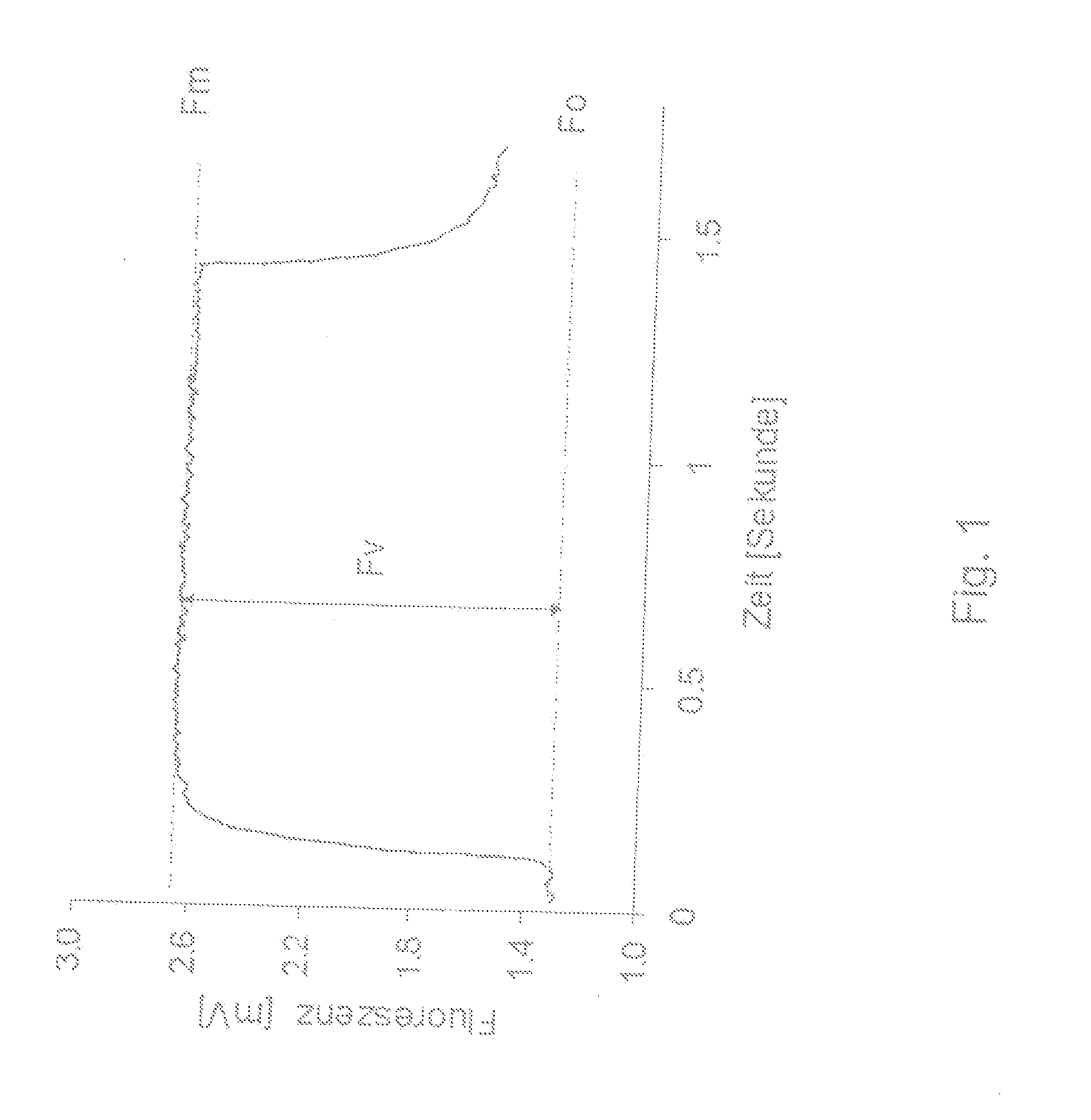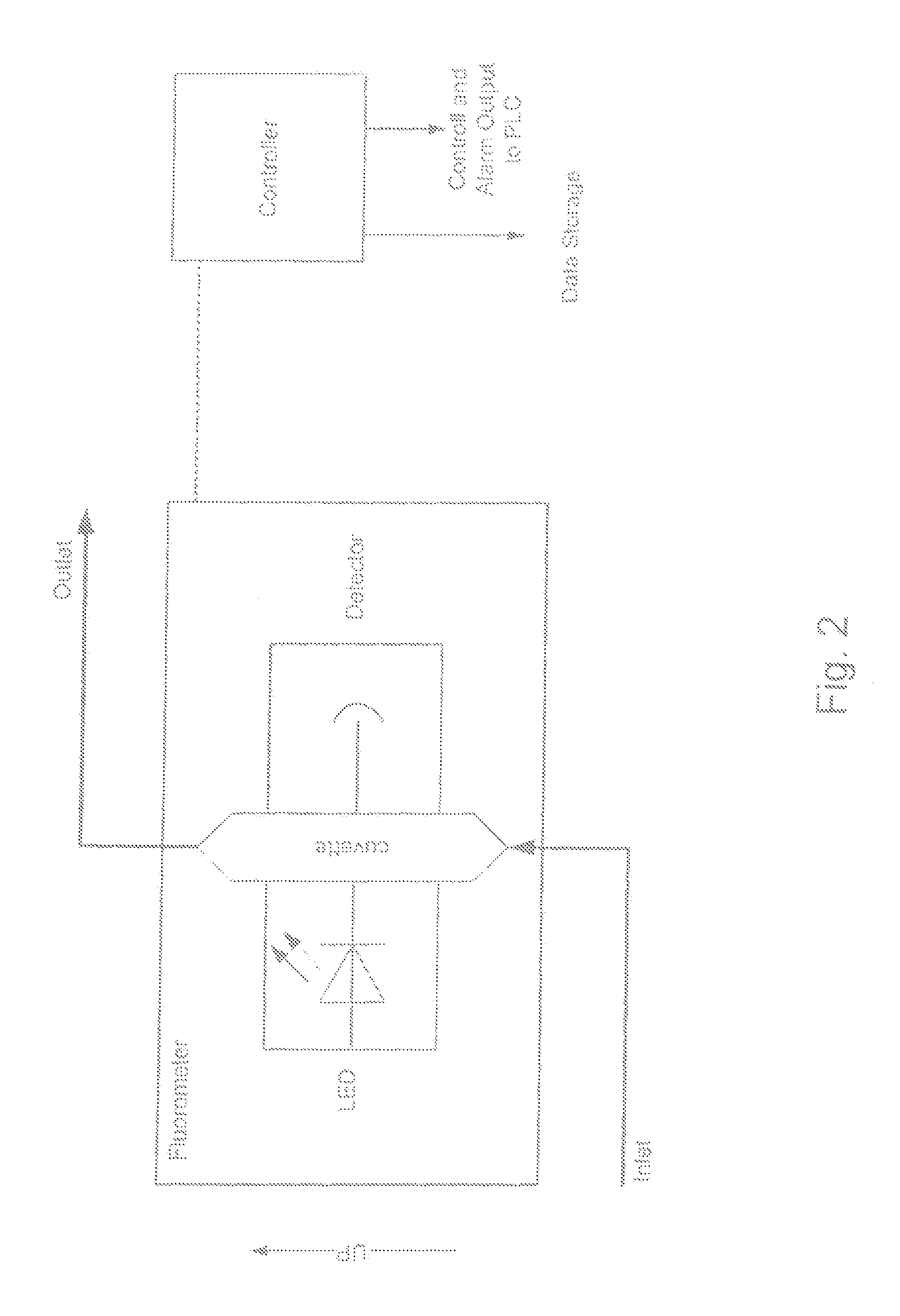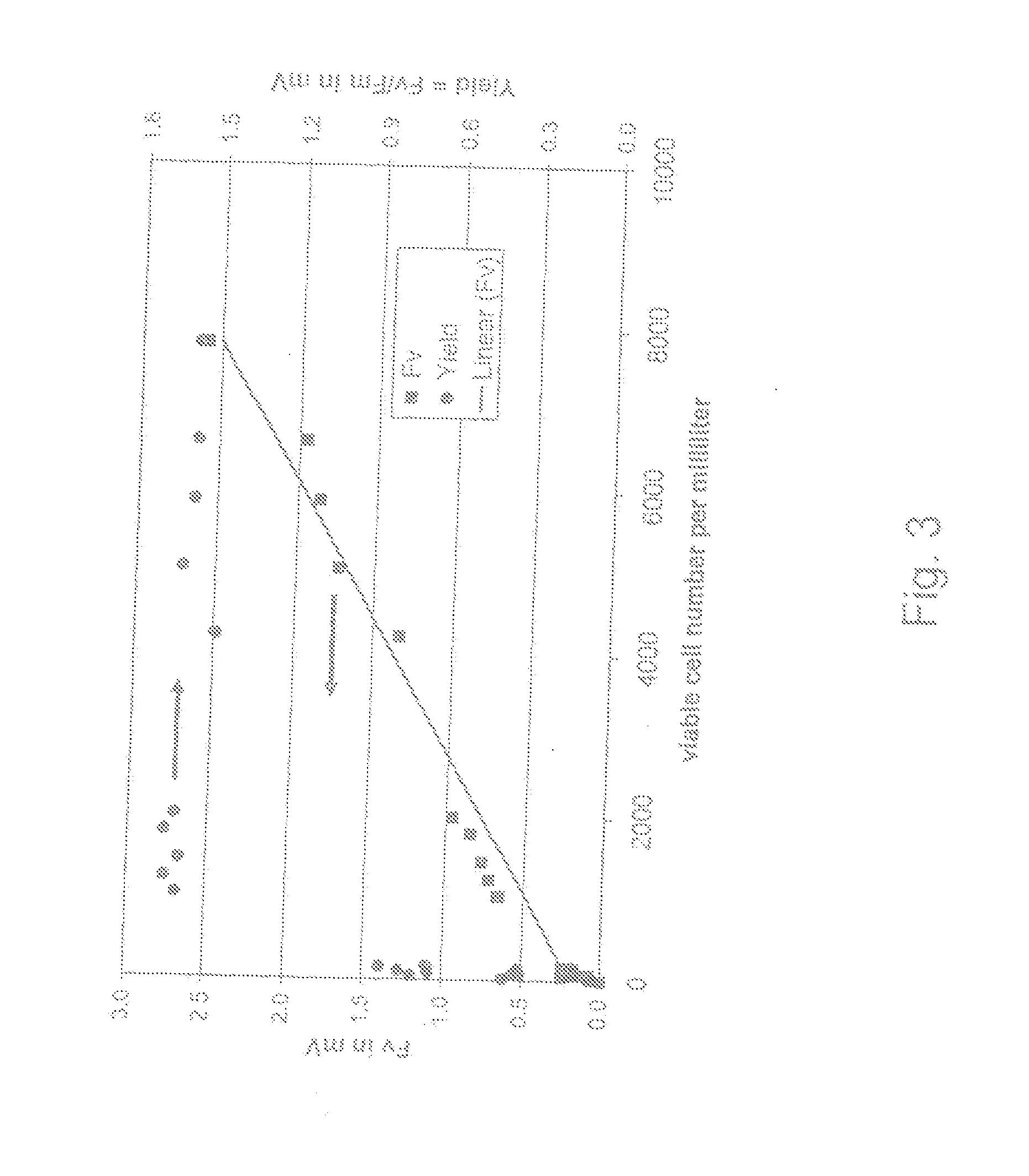Method and apparatus for detection of livign phytoplankton cells in water
a phytoplankton and water technology, applied in the direction of biochemistry apparatus, water treatment parameter control, specific water treatment objectives, etc., can solve the problem of shifting ecological equilibrium, inability to reliably yield, and inability to meet the requirements of reasonable time limits
- Summary
- Abstract
- Description
- Claims
- Application Information
AI Technical Summary
Benefits of technology
Problems solved by technology
Method used
Image
Examples
Embodiment Construction
[0013]FIG. 1 shows a measured fluorescence induction curve 1 plotted over time. The level of minimal fluorescence Fo is reached on induction of a state in which practically all primary electron acceptors are still oxidized according to a state in darkness or by using a light source of a light with a wavelength of more than 700 nm. By activating an intermittent or continuous light source at a point in time T1, photochemical reactions are activated, resulting in the primary electron acceptors being reduced. When at least approximately all the primary electron acceptors are reduced, the fluorescence level reaches the maximal fluorescence Fm. The fluorescence induction curve 1 over time after turning on the light source at point in time T1 reveals that an increase in fluorescence from the minimal fluorescence Fo to the maximal fluorescence Fm does not take place suddenly, but instead the increase is continuous in a dynamic process, which is to be attributed to the behavior of the living...
PUM
| Property | Measurement | Unit |
|---|---|---|
| wavelengths | aaaaa | aaaaa |
| wavelengths | aaaaa | aaaaa |
| wavelengths | aaaaa | aaaaa |
Abstract
Description
Claims
Application Information
 Login to View More
Login to View More - R&D
- Intellectual Property
- Life Sciences
- Materials
- Tech Scout
- Unparalleled Data Quality
- Higher Quality Content
- 60% Fewer Hallucinations
Browse by: Latest US Patents, China's latest patents, Technical Efficacy Thesaurus, Application Domain, Technology Topic, Popular Technical Reports.
© 2025 PatSnap. All rights reserved.Legal|Privacy policy|Modern Slavery Act Transparency Statement|Sitemap|About US| Contact US: help@patsnap.com



